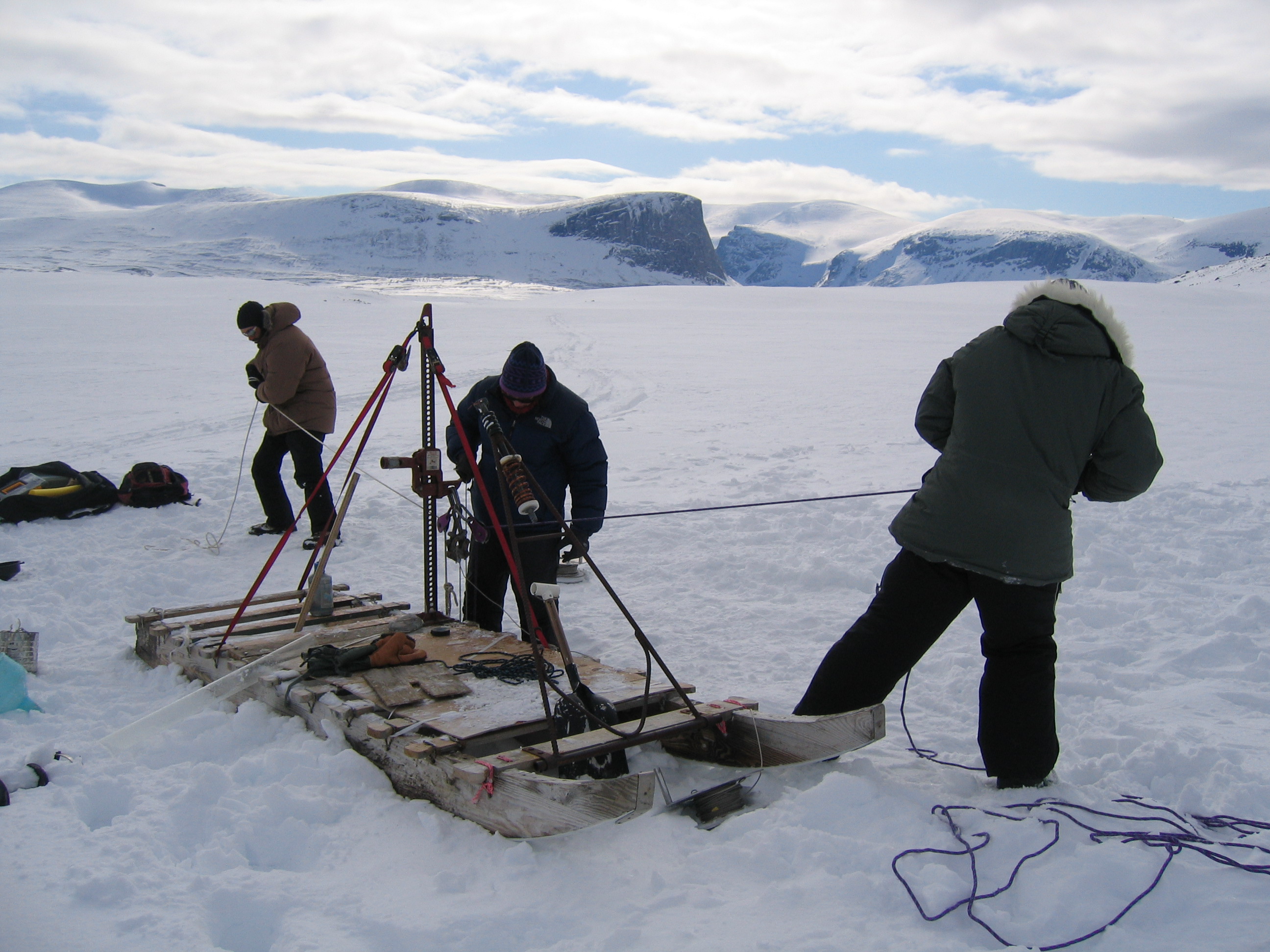| Example images from
the research |
||
|
|
|
 |
| Glacially carved lake valley on Baffin Island. The adjacent foothills hold lakes that were not scoured by glaciers during late Quaternary glaciations, and thus preserve exceptionally long sedimentary records of climate change. Photo courtesy of Jason Briner (University of Buffalo). | Fieldwork was conducted in early spring, with snowmobiles needed to access the remote study site. The sled on the left shows the sled mounted percussion coring system used to obtain the ancient sediments from Lake CF8 . Photo Neal Michelutti (Queen's University). | Fieldwork was performed in early spring (April-May) when ice thickness is still about 2 m. Photo Jason Briner (University of Buffalo). |
 |
 |
 |
| Fieldwork was performed in early spring (April-May) when ice thickness is still about 2 m. Photo Neal Michelutti (Queen's University). | The uppermost surface sediments, which record changes that have occurred during the most recent decades, are obtained using a coring device specifically designed to collect loose, unconsolidated lake mud. The sediment from this core is sectioned on-site and stored in bags. Photo Jason Briner (University of Buffalo). | The deeper (and older) sediments are obtained using a sled mounted percussion coring system. The above photograph shows the process of "hammering" the core tube into the deep sediments. Photo Neal Michelutti (Queen's University). |
 |
|
|
| The deeper (and older) sediments are obtained using a sled mounted percussion coring system. The above photograph shows the process of "hammering" the core tube into the deep sediments. Photo Jason Briner (University of Buffalo). | Once the core tube has been "hammered" into the sediments up to its maximum length (about 3m), a jack is required to lift it from the lake bottom. Photo Neal Michelutti (Queen's University). | A photograph showing the successful recovery of several metres of lake sediment. The sediment collected using the sled mounted percussion corer is shipped back south intact. Photo Neal Michelutti (Queen's University). |
 |
|
|
| Recovery of a core tube containing ancient sediments from Lake CF8. Photo Jason Briner (University of Buffalo). | Scanning electron micrograph image of an Aulacoseira diatom, preserved in the sediments of Lake CF8 on Baffin Island, Arctic Canada. Photo courtesy of Cheryl Wilson and Alexander Wolfe (University of Alberta). | Scanning electron micrograph image of an Aulacoseira diatom, preserved in the sediments of Lake CF8 on Baffin Island, Arctic Canada. Photo courtesy of Cheryl Wilson and Alexander Wolfe (University of Alberta). |
|
|
|
 |
| Scanning electron micrograph image of an Aulacoseira diatom, preserved in the sediments of Lake CF8 on Baffin Island, Arctic Canada. Photo by Cheryl Wilson (Queen's University) and Alexander Wolfe (University of Alberta). | Example of preserved head capsule of a chironomid taxon (Sergentia sp.), the larva of an aquatic insect, present in Lake CF8. Photo Jon Sweetman (Queen's University). |
Light micrograph of a example diatom found in Lake CF8. Photo by Cheryl Wilson (Queen's University). |
|
|
|
|
| Light micrograph of an example diatom found in Lake CF8. Photo by Cheryl Wilson (Queen's University). | Light micrograph of an example diatom found in Lake CF8. Photo by Cheryl Wilson (Queen's University). | Light micrograph of an example diatom found in Lake CF8. Photo by Cheryl Wilson (Queen's University). |
|
|
|
|
| Light micrograph of an example diatom found in Lake CF8. Photo by Cheryl Wilson (Queen's University). | Light micrograph of an example diatom found in Lake CF8. Photo by Cheryl Wilson (Queen's University). | Light micrograph of an example diatom found in Lake CF8. Photo by Cheryl Wilson (Queen's University). |
|
|
||
| Light micrograph of an example diatom found in Lake CF8. Photo by Cheryl Wilson (Queen's University). | ||

|